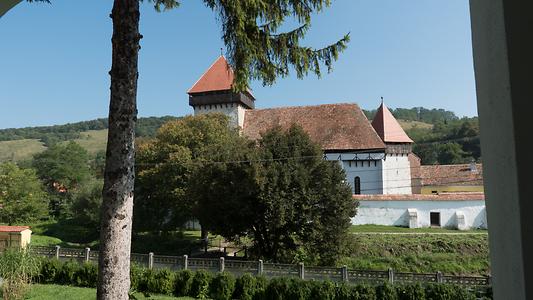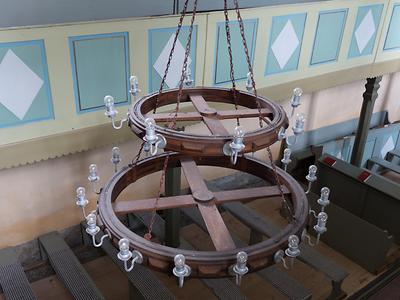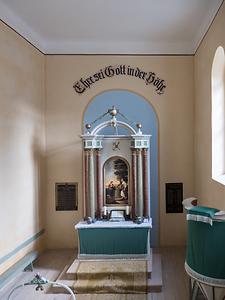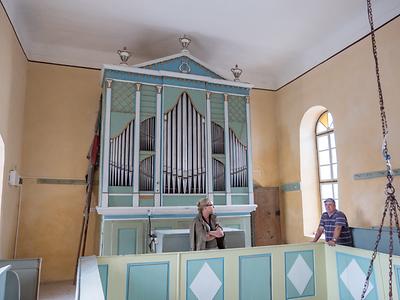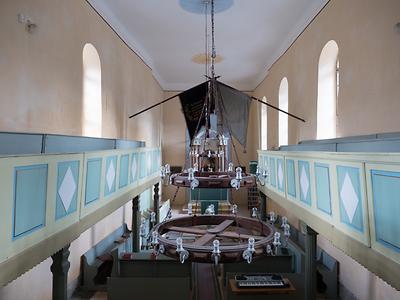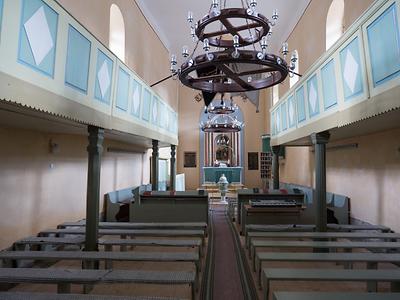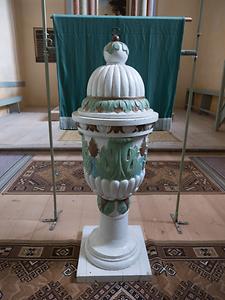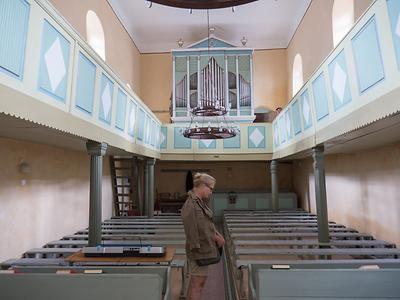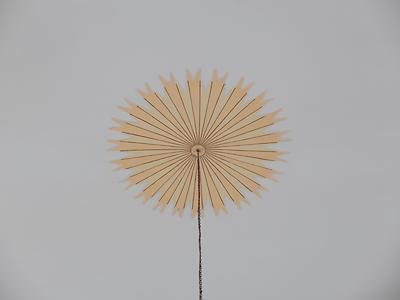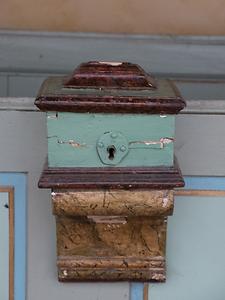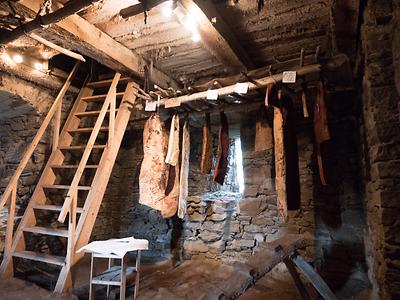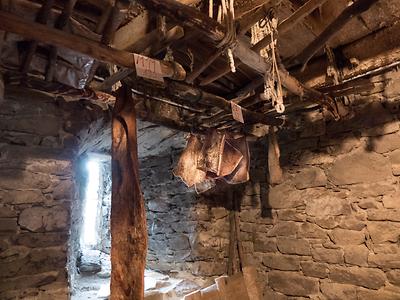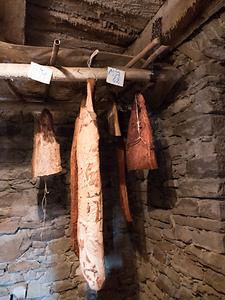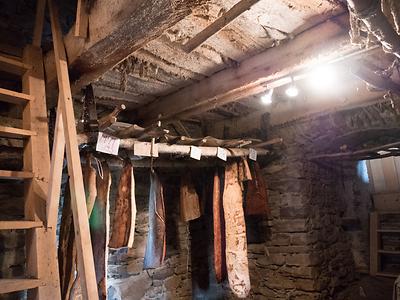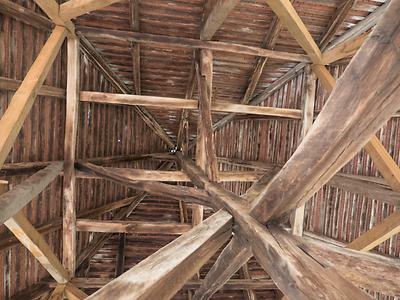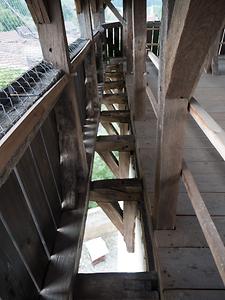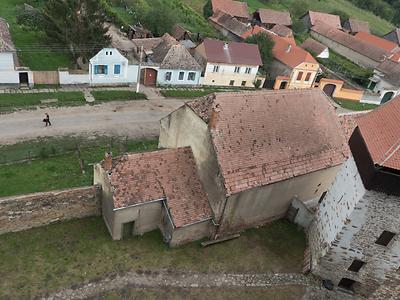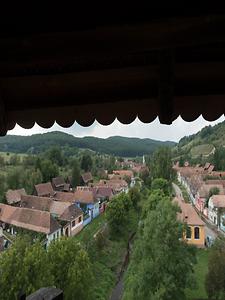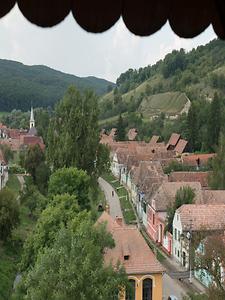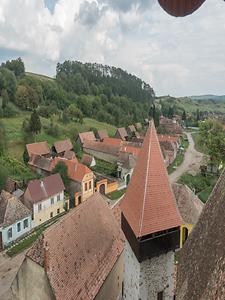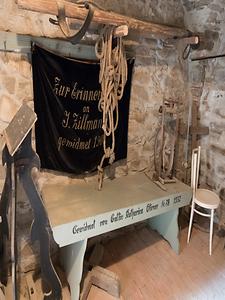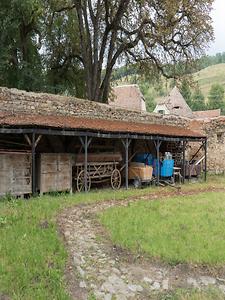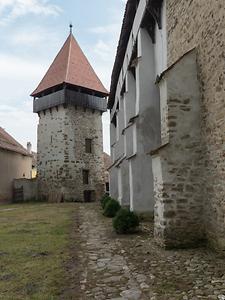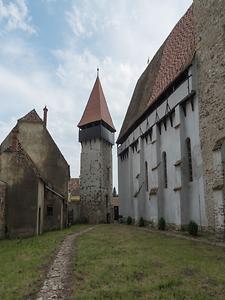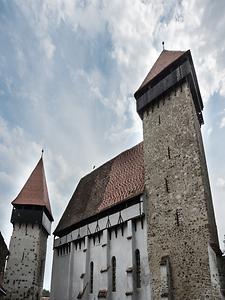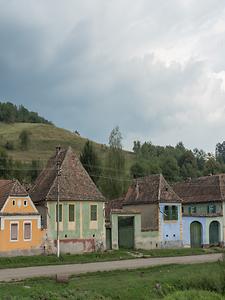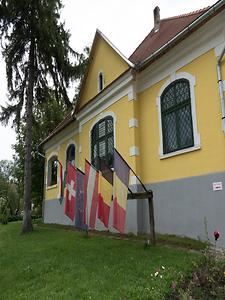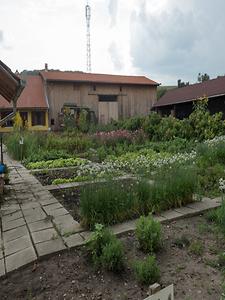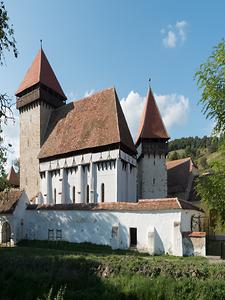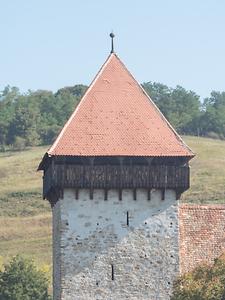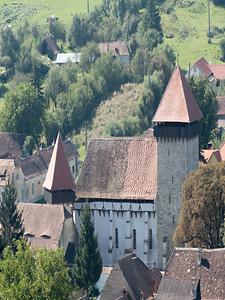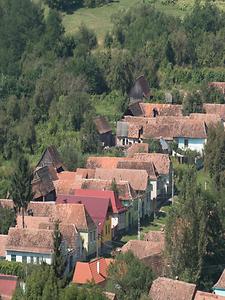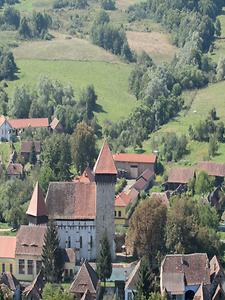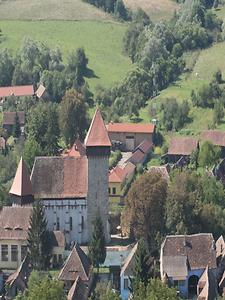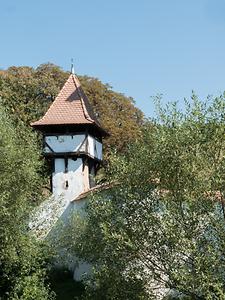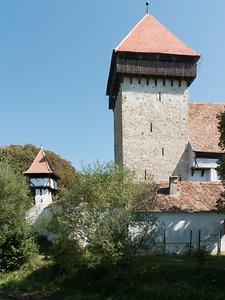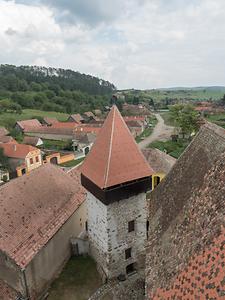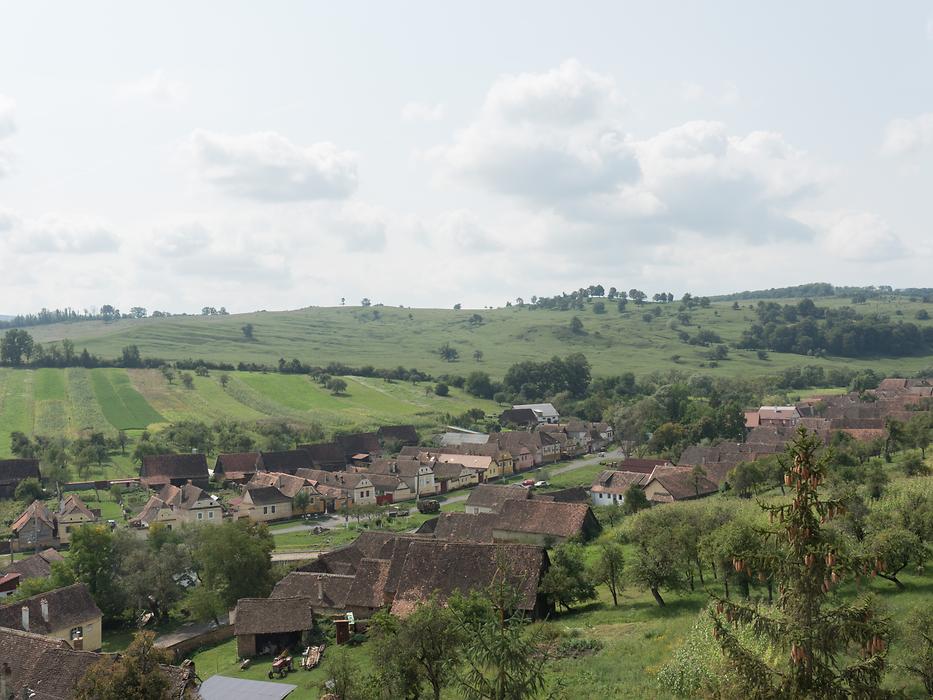Stejărișu #
- Der folgende Text und alle Bilder sind © Heimo Müller, Sommer 2016
Vom deutschen Namen Probstdorf (zugehörig zur Propstei in Hermannstad) stammt der ungarische Name Prépostfalva und der ursprüngliche rumänische Name Proștea ab. Nachdem Proștea ähnlich wie Prost klingt, was auf rumänisch “Trottel” bzw. “dumm" bedeutet, wurde der Name auf Stejărișu geändert. Der erste (1223) urkundlich bekannte Name ist allerdings slawischer Herkunft und lautete Terra Borothnik, abgeleitet von der Harbach führenden Furt. [1]
Ursprung der Kirchenburg ist eine im 14. Jhd turmlose gotische Saalkirche. Um 1500 wird der Kirchensaal nach Osten verlängert und mit einem Wehrgeschoß ergänzt.Die Kirche hat eine flache Decke und eine dreiseitige hölzerne Empore. Die Ausstattung ist klassizistisch, die Orgel stammt aus 1862. Die Kirche ist durch zwei Ringmauern umschlossen, Teile der inneren Mauer wurden 1860 abgetragen. [2] Die Kirchenburg wurde mit Mitteln des EFRE-Strukturfonds “Tezaure fortificate redescoperite – Dezvoltarea durabila a regiunii Centru prin punerea in valoare a potentialului al retelei de biserici fortificate sasesti din Transilvania“ restauriert. Eine Besonderheit ist der immer noch genutzte Speckturm, welcher auch besichtigt werden kann.
Ein Speckturm ist genau das was der Name sagt, ein Turm in welchem Speck aufbewahrt wird. In der streng reglementierten Gesellschaftsordnung der Siebenbürger Sachsen hatte alles seinen Platz, bzw. seinen Turm. So schreibt Hermann Fabiani in seinem hervorragenden Buch: “… Türme wie den Speckturm, Beamtenturm, Pelsenturm (Pflaumenturm), Türkenturm oder auch Versöhnungsturm (Holzmengen), in den man zerstrittene Eheleute einsperrte, um sie bei Wasser und Brot zu versöhnen …”. [1]
Das Aufbewahren der Schweinespeckhäften war/ist im Speckturm genau geregelt. Unter der entsprechenden Hausnummer werden die Speckstücke aufgehängt, und jedes Haus hat seinen eigenen Stempel, mit dem die abgeschnittenen Stücke markiert werden. In der Regel wurde der Speckturm am Sonntag im 7h in der Früh geöffnet, die Bauern holten sich um diese Zeit ihren Sonntagsspeck, am Ausgang wurde dann kontrolliert, ob man wohl nur vom eigenen Stück abgeschnitten hatte. Kirchgang war dann erst um 10 bzw. 11, es ist also ein Mythos, dass der Speck die Sachsen in die Kirche lockte.
Stejărișu Probstdorf, Sibiu (in early times Proștea, German: Probstdorf, Hungarian: Prépostfalva) is a village in the district of Sibiu. The German name is derived from the fact that the village was original part of the "Propstei" (church possessions) of Sibiu. Both the Hungarian form Prépostfalva and the former Romanian name Proštea derive from that term. In Romanian, the latter term sounds a little bit like Prost ('fool' or 'dull') and was therefore renamed Stejărişu ('oak forest') after the Second World War. The place is located in the middle of Transylvania, in a northern tributary valley of the Hârtibaciu (Harbach). The nearest town is Agnita (about 10 km southwest).More about the place under Stejărişu.
- The following text and all pictures are © Heimo Müller, summer 2016.
Both the Hungarian name Prépostfalva and the original Romanian name Proştea derive from the German name 'Probstdorf' (a part of the 'Propstei' (church possessions) in Hermannstadt/Sibiu). As Proştea sounds similar to Prost, which in Romanian means 'fool' or 'dull', the name was changed to Stejărişu. The first name mentioned in a document (1223), however, is of Slav origin and was Terra Borothnik, deriving from the ford across the Harbach. [1]
The beginning of the fortified church was a towerless Gothic one-aisled church in the 14th century. Around 1500, the church hall was enlarged to the east and supplemented with a defensive area. The church has a flat ceiling and a three-sided wooden gallery. The interior is classicistic, the organ from 1862. The church is enclosed by two circular walls, parts of the inner wall were removed in 1860. [2]
The fortified church was restored with the money of the EFRE-Structural Fund 'Tezaure fortificate redescoperite – Dezvoltarea durabila a regiunii Centru prin punerea in valoare a potentialului al retelei de biserici fortificate sasesti din Transilvania'. A special feature is the so-called 'Bacon Tower', still in use, which can also be visited.
A 'bacon tower' is exactly what the name suggests, a tower in which bacon is kept. In the strictly regulated social order of the Transylvanian Saxons, everything had its place respectively its tower. Hermann Fabiani writes in his excellent book: 'Towers such as the bacon tower, the officials' tower, the Pelsen (plum) tower, the Turkish tower or a reconciliation tower (Holzmengen), in which quarrelling married couples were imprisoned to reconcile them with water and bread ...'. [1]
In the bacon tower, the preservation of the pig's bacon was/is striktly regulated. Under the corresponding house number, the slices of bacon are hung up, and every house has its own seal, with which the slices are marked. As a rule, the tower was opened on Sunday morning at 7.00, the farmers picked up their Sunday bacon at this time, and at the exit they were checked to see whether they had cut off only from their own chunk of meat. Church attendance started not until 10 or 11, so it is a myth that the bacnon decoyed the Saxons into the church.
[1] http://fundatia-au-ro.ro/en/main-menue/42-stejarisu/66-stejarisu-probstdorf.html
[2] Hermann Fabiani, Die Kirchenburgen der Siebenbürger Sachsen, Monumenta Verlag, 2013, S. 195, 196
